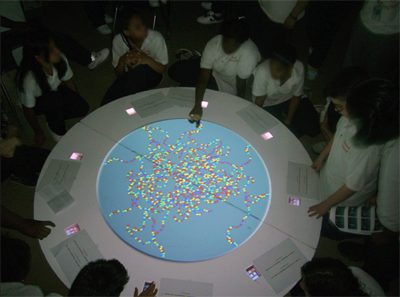Introducing nanoscale phenomena to middle school learners using a DNA design activity
April 12th, 2009
Categories: Education

Authors
Lopez Silva, B., Bernasconi, M., Abuhabsah, A., Moher, T.About
This paper summarizes the design rationale and classroom experience surrounding a middle school instructional unit on a nanoscale phenomenon: the self-assembly of DNA strands as applied to the problem of virus detection. The instructional design was motivated by a strategy for integrating new nanoscale content into an existing curricular unit, situating learner activity within a design framework, and using multiple representations of nanoscale phenomena, both as media for the design activities and as the object of student critique. Students in a middle school classroom showed significant pre-post gains both in their understandings of domain concepts and in their ability to articulate affordances and constraints of representations and models.
Resources
Citation
Lopez Silva, B., Bernasconi, M., Abuhabsah, A., Moher, T., Introducing nanoscale phenomena to middle school learners using a DNA design activity, Proceedings of the American Educational Research Association 2009 Annual Meeting, San Diego, CA, April 12th, 2009.